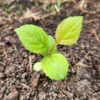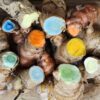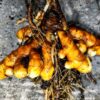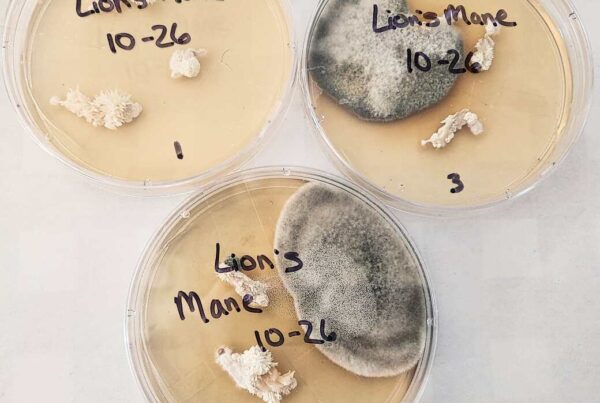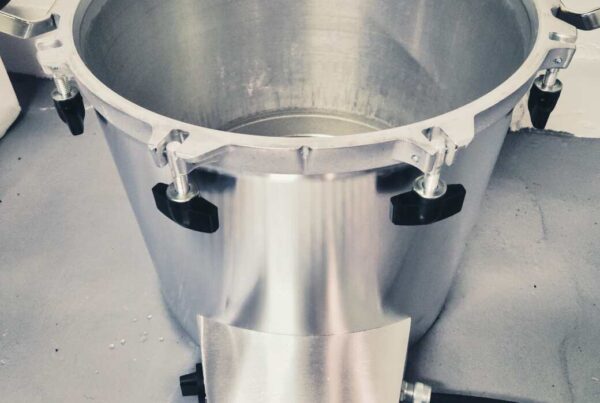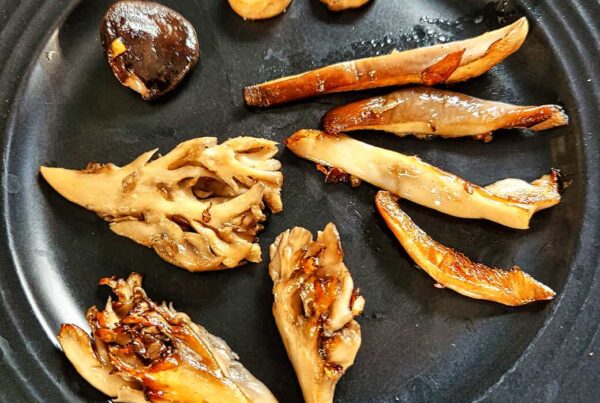What do plastic eating mushrooms (pestalotiopsis microspora) eat? If you Google this question, you’ll likely find one of many websites describing a 2011 study from Yale University. This study found that plastic eating mushrooms could digest a type of plastic called polymer polyester polyurethane, or PUR for short. The Yale experiments found this fungi could convert PUR into harmless organic matter in both oxygenated and oxygen-free environments. While this was exciting to learn, I wanted to know if plastic eating mushrooms could help me recycle plastics often found in the trash.
So… my experiments with plastic eating mushrooms began how many of my plant adventures begin. I wanted to know if plastic eating mushrooms could digest single-use plastics, specifically water bottles. My online search found nothing on this topic, so I decided to take matters into my own hands to learn about their abilities. According to the International Water Bottle Association, the majority of single-use water bottles are made of polyethylene terephthalate (PET), which can be identified by easily identified by the #1 recycling code on the bottom of the container. By looking for this recycling code on other plastic containers, I learned that PET also made the strawberry and blueberry containers that I purchased frequently. Thus, I decided PET would be my first experiment.
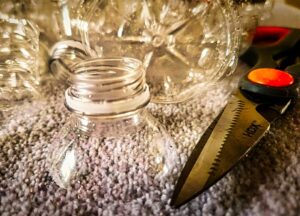
Preparing the Plastic Eating Mushroom Experiment
Sourcing Plastic
I noticed that many plastic water bottles were thrown in the trash at a friend’s wedding, so I did what any reasonable person would do. I attempted to sneak as many as I could out of the trash. When caught with my arms full of bottles, I simply smiled and told a friend that they were for “an experiment.” She smiled and nodded and did not ask more questions. I smashed several into a suitcase and they flew home with me. Once home, I rinsed out the water bottles and cut them into small strips.
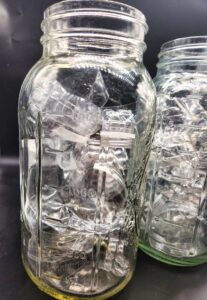
Preparing the substrate
Given my concerns that plastic eating mushrooms might eat the plastic bags that I sometimes colonize mushroom substrate in, I decided to use half-gallon mason jars. I filled them with plastic water bottle strips, and then with my usual mushroom-growing grain substrate, made of rye berries and millet. I sterilized the jars in my autoclave. Once cool, I inoculated them with plastic eating mushroom liquid culture.
Experimental Conditions
Jars were placed in one of the following three conditions:
50 degrees at 80% humidity
60 degrees at 80% humidity
70 degrees at 80% humidity
All jars had breathable material placed over vent holes, so the mycelium had oxygen (aerobic condition). Jars were placed in a climate-controlled environment to ensure temperature and humidity remained constant.
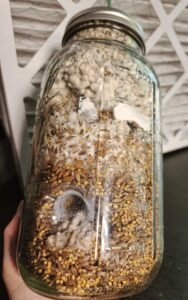
Results
The plastic eating mycelium grew well in all conditions and quickly spread through my grain substrate. After 1 week, it covered about half of the substrate. After 3 weeks, the jars were full of mycelium and all grain was covered. However, the plastic seemed untouched.
These jars were checked at least weekly, and by 6 months, most grain had been digested, but the plastic remained untouched. At this point, the jars started to small bad.
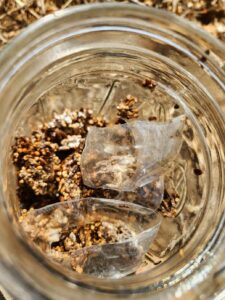
By 8 months, the jars were what respectable scientists could best describe as “yucky.” I finally decided to dump them. The plastic was still untouched. I could still clearly read the lettering on one of the bottle strips.
Bottom line- plastic eating mushrooms do not appear to digest polyethylene terephthalate (PET).

Next Plastic Eating Mushroom Experiments
Given the failure of the plastic eating mushrooms (pestalotiopsis microspora) to digest polyethylene terephthalate (PET) in my experiments, I now plan to test them on additional materials, to include high density polyethylene (HDPE), the plastic in 1-gallon water jugs (identified by the #2 recycling code), and polystyrene foam (Styrofoam), the material used for packing peanuts and some single-use plates/bowls/cups.
Additionally, as oyster mushrooms (pleurotus ostreatus) may be able to digest plastic, I plan to try these with PET, HDPE, and Styrofoam as well. Results will be posted here when available.
Have you grown any plastic eating mushrooms? Have they eaten any of your plastic? If so, I’d love to hear about it in the comment section below!
Want to grow your own mushrooms in jars? Learn how here!



